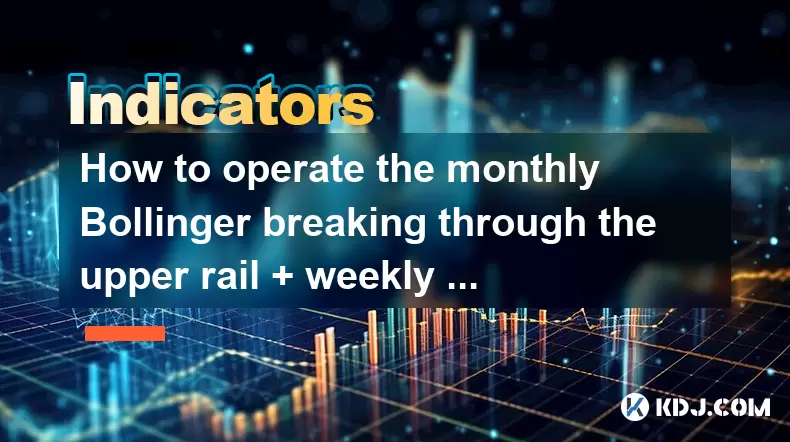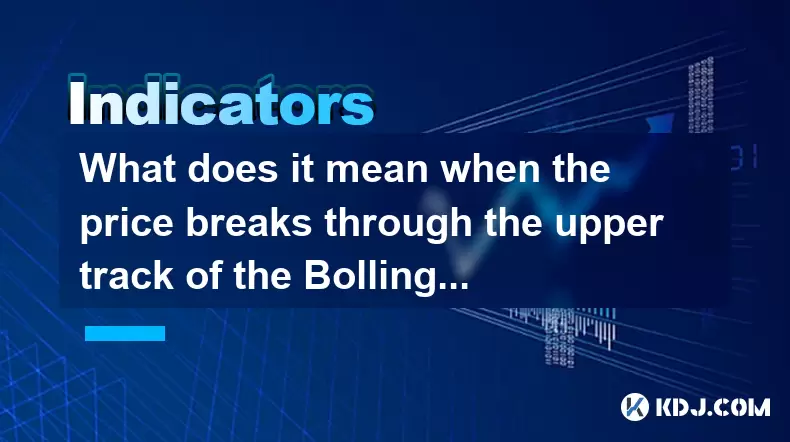-
 Bitcoin
Bitcoin $117500
-0.66% -
 Ethereum
Ethereum $3760
-1.24% -
 XRP
XRP $3.087
-2.54% -
 Tether USDt
Tether USDt $0.9999
-0.01% -
 BNB
BNB $803.6
-4.03% -
 Solana
Solana $180.3
-4.15% -
 USDC
USDC $0.9998
-0.01% -
 Dogecoin
Dogecoin $0.2218
-4.92% -
 TRON
TRON $0.3366
3.71% -
 Cardano
Cardano $0.7785
-3.73% -
 Hyperliquid
Hyperliquid $42.90
-4.75% -
 Sui
Sui $3.797
-7.45% -
 Stellar
Stellar $0.4165
-2.32% -
 Chainlink
Chainlink $17.65
-4.17% -
 Bitcoin Cash
Bitcoin Cash $561.0
-3.86% -
 Hedera
Hedera $0.2611
-4.54% -
 Avalanche
Avalanche $24.33
-7.02% -
 UNUS SED LEO
UNUS SED LEO $8.972
0.06% -
 Litecoin
Litecoin $107.6
-2.79% -
 Toncoin
Toncoin $3.254
-1.84% -
 Shiba Inu
Shiba Inu $0.00001306
-4.69% -
 Ethena USDe
Ethena USDe $1.001
0.00% -
 Uniswap
Uniswap $10.10
-4.83% -
 Polkadot
Polkadot $3.902
-4.63% -
 Monero
Monero $315.1
-2.57% -
 Dai
Dai $1.000
0.02% -
 Bitget Token
Bitget Token $4.499
-2.53% -
 Pepe
Pepe $0.00001145
-7.38% -
 Cronos
Cronos $0.1479
6.07% -
 Aave
Aave $281.3
-4.07%
How to operate the monthly Bollinger breaking through the upper rail + weekly line shrinking correction + daily line stepping back on the 20-day line?
A monthly Bollinger breakout above the upper rail signals strong bullish momentum, especially when confirmed by a weekly squeeze and daily retest of the 20-day EMA with volume.
Jul 29, 2025 at 06:00 am

Understanding the Monthly Bollinger Breakthrough Above the Upper Rail
When the monthly Bollinger Band shows price breaking above the upper rail, it signals a powerful bullish momentum that is rare and significant in the cryptocurrency market. The Bollinger Bands consist of a 20-period moving average with two standard deviations above and below, and on the monthly timeframe, this reflects long-term volatility and trend strength. A breakout above the upper band indicates that the asset is trading at unusually high levels compared to its recent historical volatility.
This kind of breakout often occurs after prolonged consolidation or during strong bull runs, such as seen in Bitcoin or Ethereum during major market cycles. Traders should verify the breakout with volume confirmation—ideally, a surge in monthly trading volume supports the validity of the move. Without volume support, the breakout may be a false signal or overextended condition.
It's essential to understand that a monthly upper rail breakout doesn’t imply immediate continuation. In fact, such extremes often precede short-term corrections or consolidation phases. The key is to combine this signal with higher time frame structure and additional confluence factors, such as Fibonacci extensions or historical resistance zones.
Interpreting Weekly Bollinger Band Contraction (Squeeze)
After a strong monthly breakout, the weekly chart often reveals a Bollinger Band squeeze, where the bands narrow significantly, indicating reduced volatility. This contraction suggests the market is compressing energy, often preceding a new directional move. In the context of a monthly breakout, a weekly squeeze may signal that the market is pausing before deciding on the next leg.
To identify a valid squeeze:
- Monitor the bandwidth, which is the distance between the upper and lower Bollinger Bands.
- A shrinking bandwidth below a certain threshold (e.g., near its 6-month low) confirms the squeeze.
- Use the %b indicator to see where price is relative to the bands—ideally, price remains within the bands during the contraction.
During this phase, traders should prepare for a potential breakout in either direction, though the bias leans bullish due to the monthly breakout. The squeeze breakout on the weekly chart can be confirmed by a close outside the bands with strong volume. This is a critical juncture for position entry or adjustment.
Daily Chart Confirmation: Price Pullback to the 20-Day Moving Average
On the daily chart, the ideal scenario following the monthly breakout and weekly squeeze is a pullback to the 20-day exponential moving average (EMA). This moving average often acts as dynamic support in uptrends. The pullback should occur in a controlled manner, not as a sharp crash, indicating healthy digestion of gains.
To validate this pullback:
- Ensure the price touches or slightly dips into the 20-day EMA but doesn’t close far below it.
- Look for bullish candlestick patterns near the EMA, such as hammers, bullish engulfing, or morning stars.
- Volume should decrease during the pullback and re-expand on the resumption of the uptrend.
This step is crucial because it filters out weak breakouts. A strong trend will retest key moving averages and bounce, while a weak trend may break below and invalidate the setup. The combination of monthly strength, weekly consolidation, and daily retest creates a high-probability alignment.
Entry Strategy and Position Management
Executing a trade based on this multi-timeframe setup requires precision. The optimal entry occurs when all three conditions align:
- Monthly price is above the upper Bollinger Band.
- Weekly Bollinger Bands are at their narrowest point in recent months.
- Daily price retests the 20-day EMA with bullish reversal signs.
To enter:
- Wait for the daily candle to close above the 20-day EMA after the pullback.
- Confirm with a volume spike on the up candle.
- Place a limit order slightly above the close to avoid slippage in volatile crypto markets.
Position sizing should reflect the long-term nature of the monthly signal. Consider allocating a core position with a portion reserved for scaling in if the weekly squeeze breaks upward. Stop-loss placement is critical:
- Set stop-loss below the recent swing low on the daily chart.
- Alternatively, use a percentage-based stop (e.g., 8–10%) to account for crypto volatility.
Take-profit levels can be set using Fibonacci extensions from the prior consolidation or at historical resistance zones visible on the monthly chart.
Risk Considerations and False Signal Avoidance
Despite the strong confluence, this setup is not immune to failure. Cryptocurrency markets are prone to whipsaws, especially after extreme moves. A monthly breakout above the Bollinger upper band can lead to overbought conditions, increasing the risk of a deep correction.
Watch for:
- Divergences on the RSI or MACD on the monthly or weekly charts.
- Lack of volume on the breakout candle—this may indicate a trap.
- Fundamental or regulatory news that could override technical patterns.
Also, not all Bollinger Band squeezes lead to explosive moves. Some resolve with sideways action. Hence, patience is required—only act when the weekly breakout confirms with price closing outside the bands.
Avoid over-leveraging, especially in altcoins, where such setups may appear but lack the liquidity to sustain momentum. Stick to major pairs like BTC/USDT or ETH/USDT for higher reliability.
Frequently Asked Questions
What if the price breaks above the monthly upper Bollinger Band but the weekly bands aren’t squeezing?
This reduces the setup’s strength. A non-squeezing weekly chart suggests ongoing volatility without consolidation, making the pullback less predictable. Wait for the weekly contraction to develop before considering entry.
Can this strategy be applied to altcoins?
Yes, but with caution. Major altcoins like Solana or Cardano may exhibit similar patterns, but their liquidity and market structure are less stable. Always verify with volume and prefer assets with consistent trading activity.
How do I adjust the 20-day EMA if the market gaps down sharply?
If the gap breaches the 20-day EMA significantly (e.g., more than 5% below), the support is likely broken. Reassess the trend. A shallow gap that quickly recovers may still honor the EMA as support.
Is it necessary to use exponential moving averages, or can simple moving averages be used?
The 20-day EMA is preferred because it reacts faster to price changes, making it more suitable for dynamic crypto markets. SMA may lag, causing delayed signals and missed entries.
Disclaimer:info@kdj.com
The information provided is not trading advice. kdj.com does not assume any responsibility for any investments made based on the information provided in this article. Cryptocurrencies are highly volatile and it is highly recommended that you invest with caution after thorough research!
If you believe that the content used on this website infringes your copyright, please contact us immediately (info@kdj.com) and we will delete it promptly.
- Bitcoin Price Drop: Navigating the Dip with Corporate Strategies
- 2025-07-30 07:30:12
- BNB's Bullish Cycle: ChatGPT Weighs In on the Future
- 2025-07-30 06:50:12
- XRP's Wild Ride: Open Interest, Price Crash Fears, and What's Next
- 2025-07-30 07:50:12
- SEC Greenlights In-Kind Creations: A Game Changer for Bitcoin ETPs?
- 2025-07-30 07:50:12
- Arbitrum (ARB) Price Prediction: Navigating the Ups and Downs of the Best ETH Eco
- 2025-07-30 06:50:12
- Ethereum, Ruvi AI, Presale: The Next Big Thing in Crypto?
- 2025-07-30 07:30:12
Related knowledge

What does it mean when the EMA combination crosses upward for the first time after sideways trading?
Jul 28,2025 at 03:43pm
Understanding the EMA and Its Role in Technical AnalysisThe Exponential Moving Average (EMA) is a widely used technical indicator in cryptocurrency tr...

What does it mean when the price breaks through the upper track of the Bollinger Band but the RSI is overbought?
Jul 30,2025 at 03:35am
Understanding Bollinger Bands and Their Upper TrackBollinger Bands are a widely used technical analysis tool developed by John Bollinger. They consist...

What signal does the ROC send when it rises rapidly from a low level and breaks through the zero axis?
Jul 27,2025 at 10:15am
Understanding the Rate of Change (ROC) IndicatorThe Rate of Change (ROC) is a momentum-based oscillator used in technical analysis to measure the perc...

What does it mean when the moving averages are glued together and a gap appears?
Jul 29,2025 at 07:49pm
Understanding Moving Averages in Cryptocurrency TradingMoving averages are among the most widely used technical indicators in the cryptocurrency tradi...

What does it mean when TEMA breaks through the long-term downward trend line?
Jul 29,2025 at 02:50pm
Understanding the Role of Smart Contracts in Decentralized Finance (DeFi)Smart contracts are self-executing agreements with the terms of the agreement...

What does it mean when the price breaks through the double bottom neckline and the moving averages are arranged in a bullish pattern?
Jul 28,2025 at 10:57am
Understanding the Double Bottom PatternThe double bottom is a widely recognized reversal chart pattern in technical analysis, particularly within the ...

What does it mean when the EMA combination crosses upward for the first time after sideways trading?
Jul 28,2025 at 03:43pm
Understanding the EMA and Its Role in Technical AnalysisThe Exponential Moving Average (EMA) is a widely used technical indicator in cryptocurrency tr...

What does it mean when the price breaks through the upper track of the Bollinger Band but the RSI is overbought?
Jul 30,2025 at 03:35am
Understanding Bollinger Bands and Their Upper TrackBollinger Bands are a widely used technical analysis tool developed by John Bollinger. They consist...

What signal does the ROC send when it rises rapidly from a low level and breaks through the zero axis?
Jul 27,2025 at 10:15am
Understanding the Rate of Change (ROC) IndicatorThe Rate of Change (ROC) is a momentum-based oscillator used in technical analysis to measure the perc...

What does it mean when the moving averages are glued together and a gap appears?
Jul 29,2025 at 07:49pm
Understanding Moving Averages in Cryptocurrency TradingMoving averages are among the most widely used technical indicators in the cryptocurrency tradi...

What does it mean when TEMA breaks through the long-term downward trend line?
Jul 29,2025 at 02:50pm
Understanding the Role of Smart Contracts in Decentralized Finance (DeFi)Smart contracts are self-executing agreements with the terms of the agreement...

What does it mean when the price breaks through the double bottom neckline and the moving averages are arranged in a bullish pattern?
Jul 28,2025 at 10:57am
Understanding the Double Bottom PatternThe double bottom is a widely recognized reversal chart pattern in technical analysis, particularly within the ...
See all articles

























































































